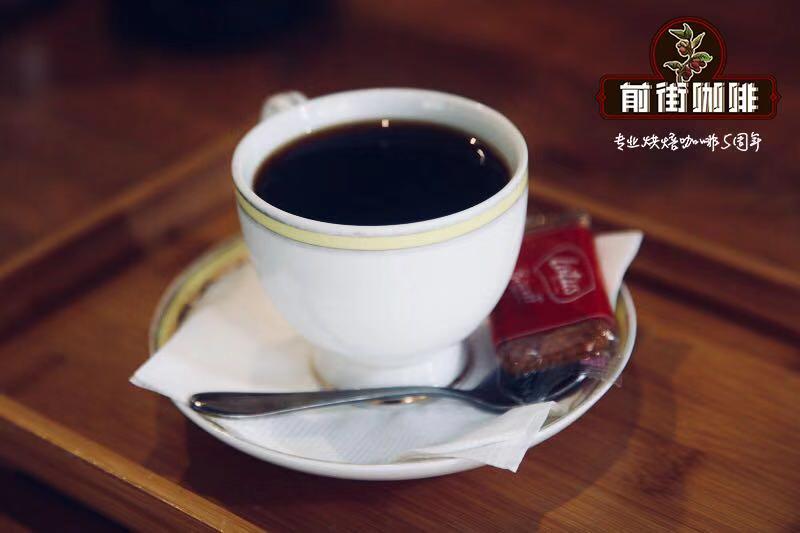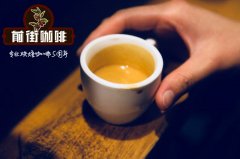Brief introduction of Ethiopian Red Cherry Coffee sharing of red cherry coffee

Professional coffee knowledge exchange more coffee bean information please follow the coffee workshop (Wechat official account cafe_style)
Introduction and tasting of Qianjie Coffee-Red Cherry Coffee
Yega Xuefei is affiliated to the Sidamo producing area, which is separated separately because of its unique flavor. In addition to the small town of Yega Xuefei, it also includes three by-product areas around Wenago, Kochere, Gelena and Abaya. Therefore, Yirgacheffe A, Wenago A, Kochere An and Gelena/AbayaA will be more expensive than B of the same name in the new Yega Sheffield rating system.
Yega Xuefei is a small town in Ethiopia, 1700-2100 meters above sea level. It is one of the highest coffee producing areas in the world and is synonymous with Ethiopian boutique coffee. Lake Turkana, Lake Abaya and Lake Chamo bring rich water vapor here, giving birth to the unique and unpredictable flavor of Yejasuefei, which is ambiguous and ambiguous.
At first, Yejassefi's coffee trees were planted by European monks, and later by farmers or cooperatives. Coffee trees are naturally scattered in forests, countryside and backyards. During the harvest season, the Ethiopian Coffee Trading Company will go to town to buy coffee beans collected by farmers and eventually sell them under the brand name "Yega Xuefei".
The "Red Cherry Project" (ORC) is a project to improve the quality of small-scale farms. In 2007, Trabocca, the largest raw bean manufacturer in the Netherlands, proposed the "Red Cherry Project" in pursuit of high-quality Essex beans. The plan requires that raw coffee beans should be picked not only by red fruit, but also by hand, but this is only the most basic requirement, and the plan is far from simple. The main purpose is to encourage soybean farmers and surprise roasters. Trabocca, the largest coffee bean manufacturer in the Netherlands, invited all Ethiopian farms to produce small batches of beans of about 1500 to 3000 kilograms (25,50 bags) before the harvest season. Women can only choose fully 100% ripe red cherries, which differ greatly in the flavor of the brewed coffee. So attentive and industrious Ethiopian women are important drivers of the Red Cherry Project.
The red cherry program is also a reinforcing method, which makes the farm pay more attention to the process of selecting beans, and the prices of these coffees are relatively high. Red cherries have water washing, sun-drying beans, half-washing, half-sun, experimental coffee and so on. The main producing areas are Yega Sheffield, Sidamo, Punga Forest, Lekanti, Ken Bata, Iruba, Hara, Lim, etc., and joined Coroja Golocha in 2011 (near Harald). These are all unique flavors and can fully show the flavor of Ethiopian coffee. Trabocca will choose from it when he receives the coffee. Farms that pass the cup test quality test in Ethiopia and the Netherlands will pay high bonuses. Trabocca, the promoter of the Red Cherry program, invests all the profits made in recent years in the cooperative farm. Trabocca stressed that this is an unprofitable plan, so the company only uses four people, including the boss and secretary, to implement the red cherry project, and other administrative related matters support the parent company to reduce administrative expenses. All the profits go back to the cooperative farm.
1. Smell the dry aroma of coffee
Washed Yega Chuefeiduo has dry aromas of flowers and fruits, aromas of lemon, and rich aromas of wine, flowers and fruit in the sun.
2. Perceive the texture of the entrance
When the coffee liquid enters the mouth, stimulates the taste buds, feels the coffee liquid with the tongue, and feels the feeling of being hit in the mouth. In professional coffee tasting, this indicator is also known as taste, which is visually interpreted as water and syrup or milk. The texture of syrup and milk is thicker than water. If washed with water, Yega Chuefei (shallow baked) tastes very good. Sun-washed Yega Chuefei is full and rich in soup, which can also be understood as a sense of stickiness.
3. Understanding cleanliness
There is some astringency in the coffee, some pink, some earthy flavor, such coffee is not clean, high cleanliness can make the taste relaxed and pleasant, washed Yejia Xuefei taste will be clean and clear
4. Know the acidity
The sweet and sour substances in coffee are the components of the complexity of coffee flavor. Yega Xuefei is sour, but it is very comfortable and round in sweetness. Yega snow washed contains rich sour flavors such as citrus and berries.
5. Feel sweetness
Sweetness is the simplest and most intuitive aspect of tasting coffee. A good cup of coffee has almost no bitterness, so sweetness is more obvious.
Sweetness is loved and accepted by everyone, and pleasant and lively sweetness will match well with acid. When we drink coffee, there are superior sweetness with lively sour, sour-sweet balance, sour-sweet conversion.
Sun Yega Chuefei coffee with sweetness is like a fruit, in the coffee beans contain fructose, sweet, similar to sucrose, brown sugar, caramel, full of taste.
6. Taste the flavor Flavor
When coffee is in your mouth, you can feel its flavor and usually distinguish between sweet, salty, sour and bitter coffee.
7. Perception and aftertaste
After drinking coffee, there will always be a taste back from the throat, called "back dry". If it makes people feel dry, it is generally called "dry" or "dry throat".
The aftertaste of the sun Yega Chuefei is very long and clear, and a cup of coffee with a good taste will make the aroma stay in the mouth longer and the finish longer.
END
Important Notice :
前街咖啡 FrontStreet Coffee has moved to new addredd:
FrontStreet Coffee Address: 315,Donghua East Road,GuangZhou
Tel:020 38364473
- Prev

Ethiopian Fruit Ding Coffee introduction to the treatment of Coffee in Fruit Ding producing areas
For more information on coffee beans, please follow the Coffee Workshop (Wechat official account cafe_style) Banko Gotiti is a village in Gedeb District, Gedeo District, Ethiopia, where Yirgacheffe is located. The Banko Gotiti cooperative was established in 2012, separate from the larger Worka cooperative. Banko Gotiti has about 300 members, and they
- Next

How about Guatemalan coffee beans? Guatemalan coffee flavor and taste
Coffee workshop (Wechat official account cafe_style) Front Street Coffee-Guatemala Coffee introduction Guatemala is bordered by Mexico to the north, Honduras and El Salvador to the south, the Caribbean to the east and the Pacific to the west, making it rich in tropical rain forests, volcanic geology, plateau valleys and ever-changing micro-climate. Dangerous
Related
- Beginners will see the "Coffee pull flower" guide!
- What is the difference between ice blog purified milk and ordinary milk coffee?
- Why is the Philippines the largest producer of crops in Liberia?
- For coffee extraction, should the fine powder be retained?
- How does extracted espresso fill pressed powder? How much strength does it take to press the powder?
- How to make jasmine cold extract coffee? Is the jasmine + latte good?
- Will this little toy really make the coffee taste better? How does Lily Drip affect coffee extraction?
- Will the action of slapping the filter cup also affect coffee extraction?
- What's the difference between powder-to-water ratio and powder-to-liquid ratio?
- What is the Ethiopian local species? What does it have to do with Heirloom native species?

